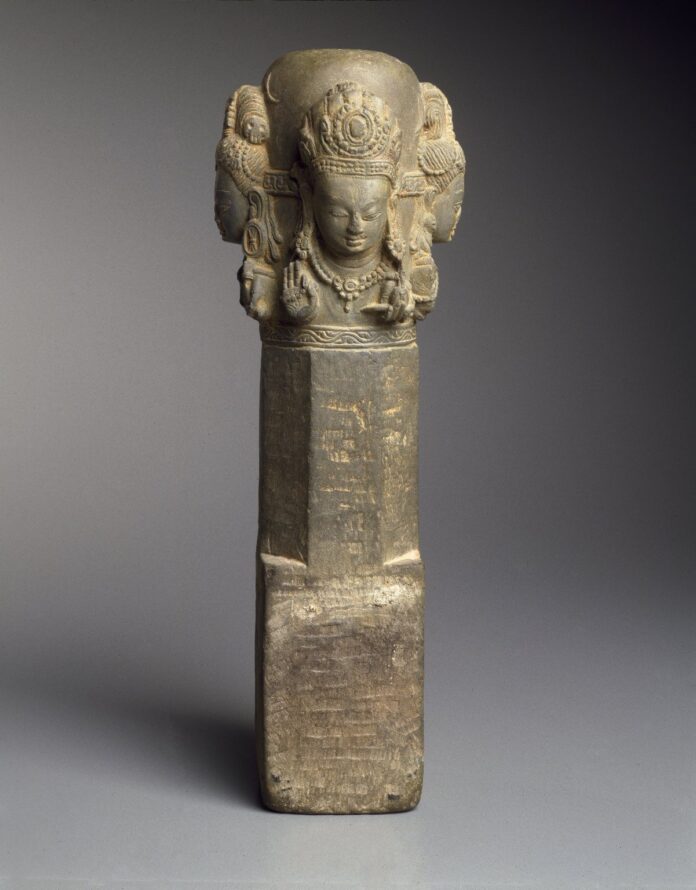The stolen statue of a Hindu deity was sent back to Nepal with the help of the Art Institute of Chicago. The artwork, known as the linga, is a depiction of the Hindu deity Shiva with four faces. The slate sculpture is also called chaturmukhalinga. It dates back to the 6th century.
Linga was in the hands of a private collector, and the Art Institute of Chicago helped Nepal restore the sculpture. The stolen statue had never been accessioned by the Art Institute of Chicago. The museum did not provide information on the origin of the work or the date of the alleged theft.
The museum spokesman said the Art Institute of Chicago worked closely with the lender and the government of Nepal to arrange for the safe transfer of the four-person Ling (chaturmuhalinga) back to his home country. He also added that they are very pleased with this result and grateful for the partnership between the lender and the government of Nepal.
In an email, a spokesman for the Nepal Embassy in the United States confirmed that the artifact was on its way to Kathmandu, the capital of Nepal, and said it would be delivered at an appropriate time. He referred to an agreement reached between the collector and the embassy.
The news about the stolen statue came just over a month after a similar return to Nepal. It was linked to another major American institution. It was the Dallas Museum of Art in Texas that returned the sacred stele of Lakshmi-Narayana, which was stolen from a Hindu sanctuary by marauders in 1984.
The U.S. Federal Bureau of Investigation stepped in after experts determined the work was likely stolen in 2019. And in February, some activists began to express concern over a sacred Shiva tablet at the Denver Art Museum in Colorado, accusing the museum of possessing work stolen from Nepal. The Denver Art Museum denied these claims in an article published in 5280 magazines, stating that no official inquiries have been made about the piece.
Shiva as Lord of the Dance (Nataraja)

The art of medieval India, like the art of medieval Europe, primarily served religion. The devotee’s spiritual experience was enhanced by meditation inspired by works of art and architecture. Just as the luminous upper chapel of Sainte Chapelle dazzled and stunned believers in France, looming bronze statues of Shiva and Parvati, for example, in the inner halls of the Meenakshi temple in Madurai, southern India, would have awe-inspiring a Hindu devotee.
It is important to remember that the bronze Shiva as Lord of the Dance (Nataraja – Nata means dance or performance, and Raja means king or lord) is a sacred object that has been taken out of its original context – in fact, we don’t even know where it was this sculpture that was originally worshiped.
In the intimate spaces of the South Asian galleries of Florence and Herbert Irving at the Metropolitan Museum of Art, Shiva Nataraja is surrounded by other metal statues of Hindu gods, including Lords Vishnu, Parvati, and Hanuman. Beginning in the 11th century, Hindu devotees carried these statues in processions as the priests followed the chanting and blessings of the people gathered for this purpose.
Sometimes the statues were adorned with magnificent red and green robes and gold ornaments to denote the glorious human form of the gods. In these processions, Shiva Nataraja’s legs could be wrapped in white and red cloth, decorated with flowers, and surrounded by candles.

Shiva is part of the powerful triad of divine energy in the cosmos of the Hindu religion. Shiva Nataraja in the Metropolitan Museum was created somewhere in the XI century during the Chola dynasty (IX-XIII centuries AD) in the south of India, in the territory of the present state of Tamil Nadu.

























